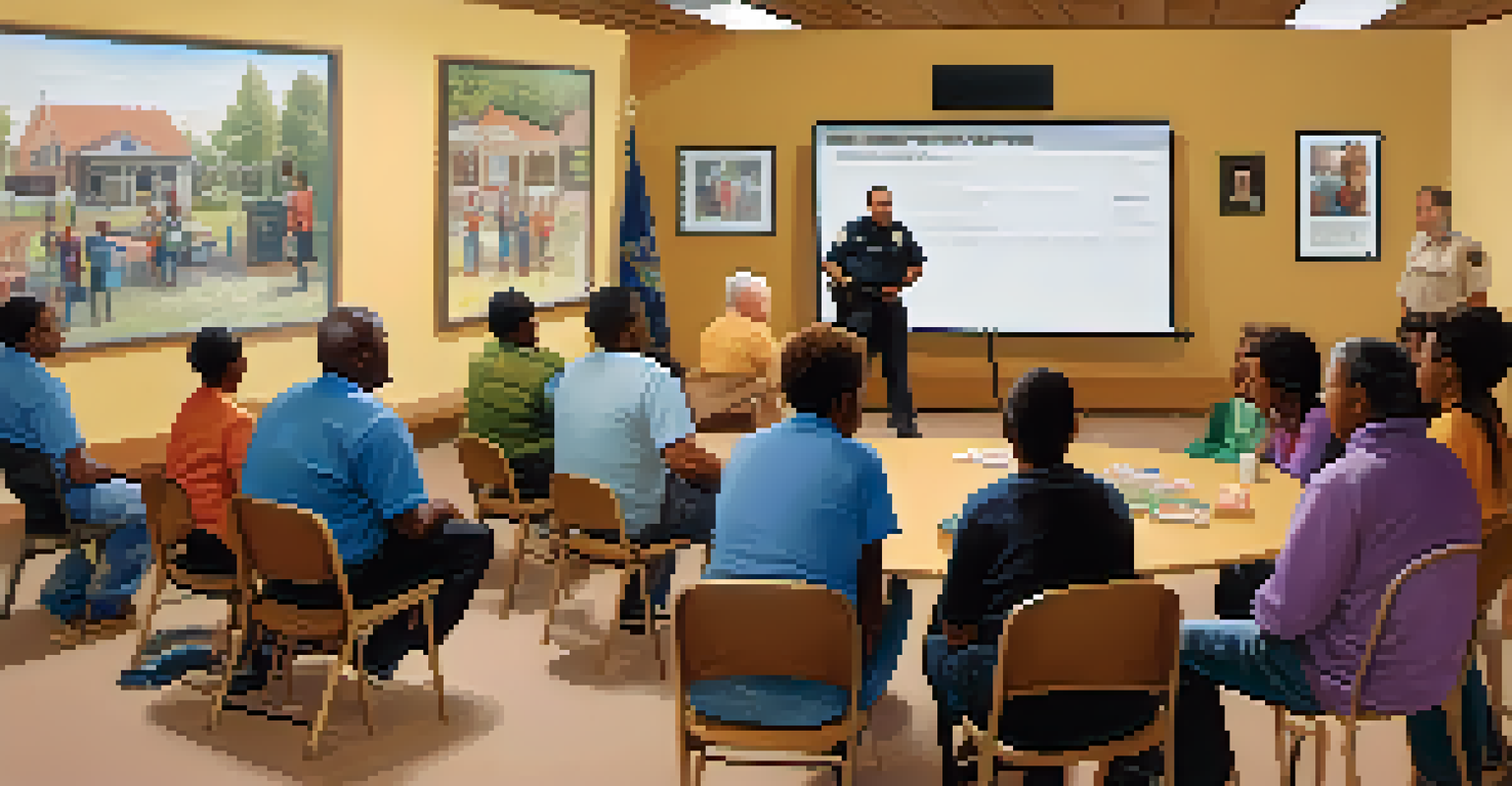Building Trust: Law Enforcement and Community Self Defense

Understanding the Importance of Trust in Communities
Trust is the foundation of any successful relationship, and this is especially true between law enforcement agencies and the communities they serve. When community members trust their police force, they are more likely to cooperate, report crimes, and engage in public safety initiatives. This trust fosters a sense of belonging and safety, making neighborhoods feel more secure.
Trust is built with consistency.
However, trust can easily be eroded by negative experiences or perceived injustices. For instance, if a community feels targeted or neglected, it can lead to animosity towards law enforcement. This cycle of distrust can create barriers that hinder effective policing and community engagement.
Building and maintaining this trust requires ongoing effort from both sides. It involves open communication, transparency, and a commitment to understanding the community's needs. By prioritizing trust, law enforcement can create a stronger, more resilient partnership with the community.
The Role of Community Self-Defense Initiatives
Community self-defense initiatives empower residents to take an active role in their safety. These programs can include neighborhood watch groups, self-defense classes, or community policing efforts where citizens collaborate with law enforcement. They provide a platform for community members to voice their concerns and contribute to their safety actively.

Through these initiatives, individuals learn valuable skills and gain confidence in their ability to respond to emergencies. This empowerment can shift the perception of law enforcement from being an external authority to being a partner in public safety. It cultivates a shared responsibility for crime prevention and community well-being.
Trust is Key for Community Safety
Building trust between law enforcement and communities enhances cooperation, public safety, and overall community resilience.
Moreover, self-defense initiatives can enhance communication between law enforcement and community members. When residents participate in these programs, they develop relationships with officers, fostering mutual respect and understanding. This collaboration is essential for effective crime prevention and community resilience.
Transparency: A Cornerstone of Trust in Law Enforcement
Transparency in law enforcement practices is crucial for building community trust. When police departments openly share information about their policies, procedures, and incidents, they demonstrate accountability. This openness mitigates suspicion and helps community members feel more informed about law enforcement activities.
The police are the public and the public are the police.
For example, sharing data on crime rates, police interactions, and disciplinary actions can help demystify the law enforcement process. It allows citizens to understand not only what is happening in their neighborhoods but also the rationale behind police actions. This awareness fosters a sense of involvement and investment in public safety.
Additionally, transparency can help address community concerns before they escalate. By proactively communicating with residents about challenges and changes, law enforcement agencies can build a collaborative environment where feedback is welcomed and acted upon. This two-way communication strengthens the trust bond between police and community members.
Training Officers in Community Engagement
Effective community engagement begins with training police officers in communication and interpersonal skills. Officers trained in de-escalation techniques and cultural sensitivity are better equipped to interact positively with diverse communities. This training helps them approach situations with empathy, fostering constructive interactions.
Moreover, when officers understand the unique dynamics of their communities, they can tailor their approaches accordingly. For instance, they might work with community leaders to address specific concerns or participate in local events to build rapport. This proactive engagement can significantly reduce tensions and misunderstandings.
Empowerment Through Self-Defense
Community self-defense initiatives foster active participation in safety, shifting perceptions of law enforcement to collaborative partners.
Investing in officer training is not just about improving individual interactions; it’s about creating a culture of community-focused policing. When law enforcement agencies prioritize engagement training, they send a clear message that they value their relationships with community members, ultimately strengthening trust.
Community Feedback: Listening and Adapting
Listening to community feedback is essential for law enforcement agencies to adapt their practices effectively. Regular forums, surveys, and community meetings provide residents with a platform to express their concerns and suggestions. This two-way dialogue helps police understand what is working and what needs improvement.
For example, if community members express concerns about specific policing tactics or safety issues, law enforcement can address these directly. By taking action based on feedback, agencies demonstrate that they value community input and are willing to evolve. This responsiveness can significantly enhance trust.
Moreover, when community members see their feedback leading to tangible changes, it reinforces their belief in the partnership with law enforcement. This collaborative approach not only improves safety but also fosters a sense of ownership and pride among residents in their neighborhood.
Building Relationships Through Local Events
Local events provide an excellent opportunity for law enforcement to engage with community members in a relaxed and informal setting. Events such as town halls, community picnics, or public safety fairs allow for personal interactions that can break down barriers. These gatherings humanize officers and help residents see them as approachable allies.
Participating in community events also allows law enforcement to showcase their commitment to public safety and community service. When officers are visible in their communities, it fosters familiarity and trust. Residents are more likely to reach out to them with concerns or suggestions when they feel a personal connection.
Transparency Builds Community Trust
Open communication and sharing of information by law enforcement promote accountability and strengthen the bond with community members.
Additionally, these events can serve as a platform for education. Law enforcement can share important safety information, resources, and tips for crime prevention, empowering residents to take an active role in their community's safety. By building relationships through local events, trust is cultivated, creating a safer environment for everyone.
The Future of Trust Between Law Enforcement and Communities
The future of trust between law enforcement and communities hinges on ongoing commitment and innovation. As societal dynamics evolve, law enforcement must adapt their approaches to meet the changing needs of the communities they serve. This adaptability requires a willingness to embrace new ideas and technologies that facilitate communication and engagement.
For instance, utilizing social media platforms can enhance transparency and provide real-time updates to residents. By engaging with the community online, law enforcement can address concerns promptly and keep residents informed. This proactive approach can help prevent misunderstandings and build a sense of community trust.

Ultimately, the goal is to create a partnership where law enforcement and community members work together towards common objectives. By prioritizing trust-building initiatives, both sides can contribute to a safer, more connected environment. This collaborative future can foster resilience and enhance public safety for generations to come.